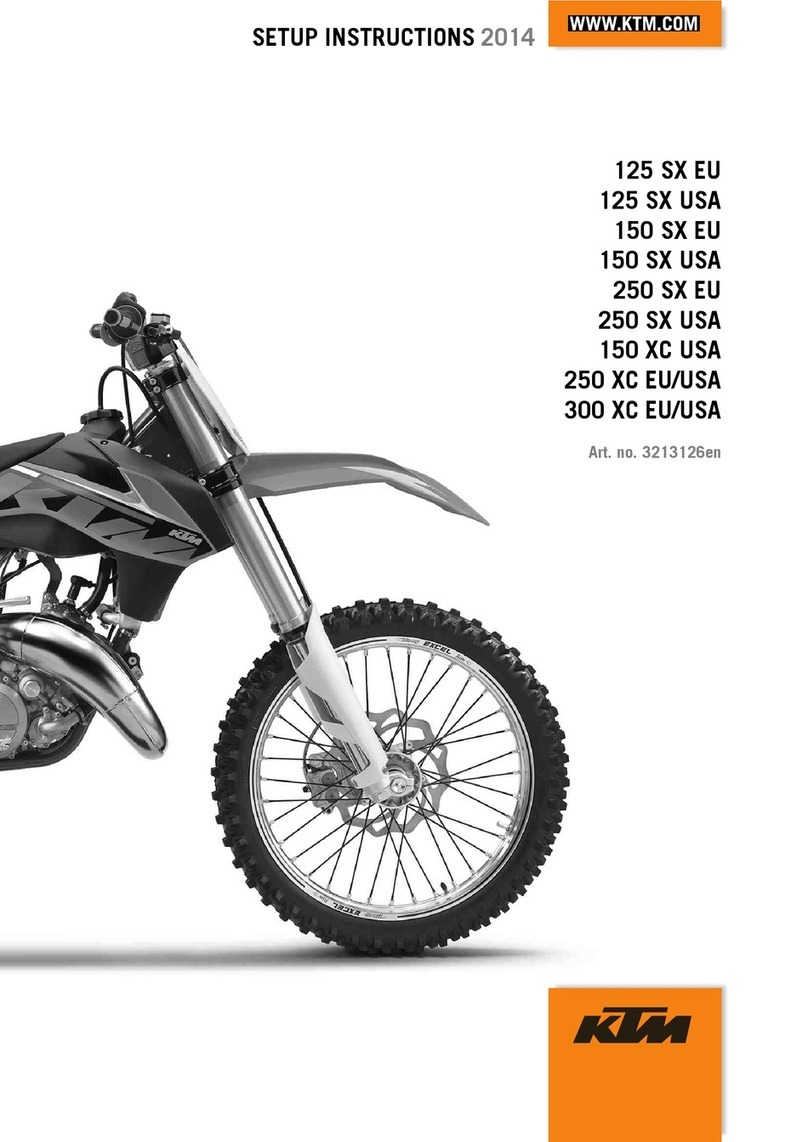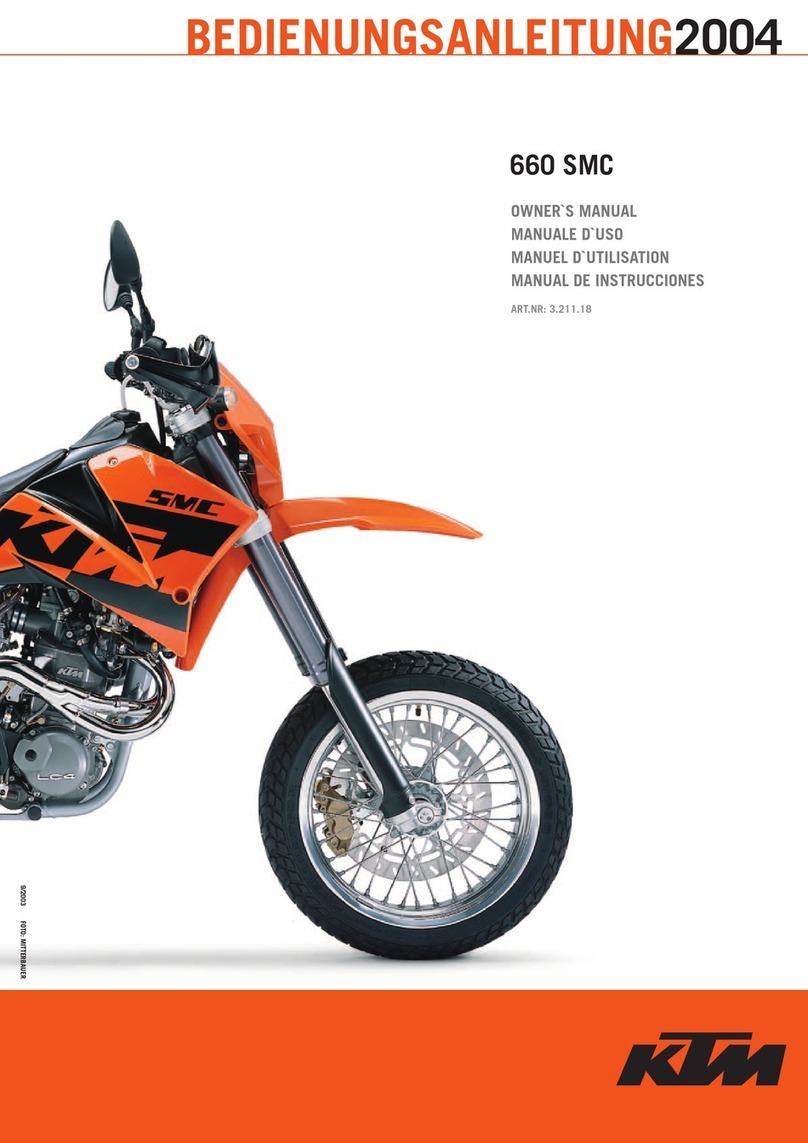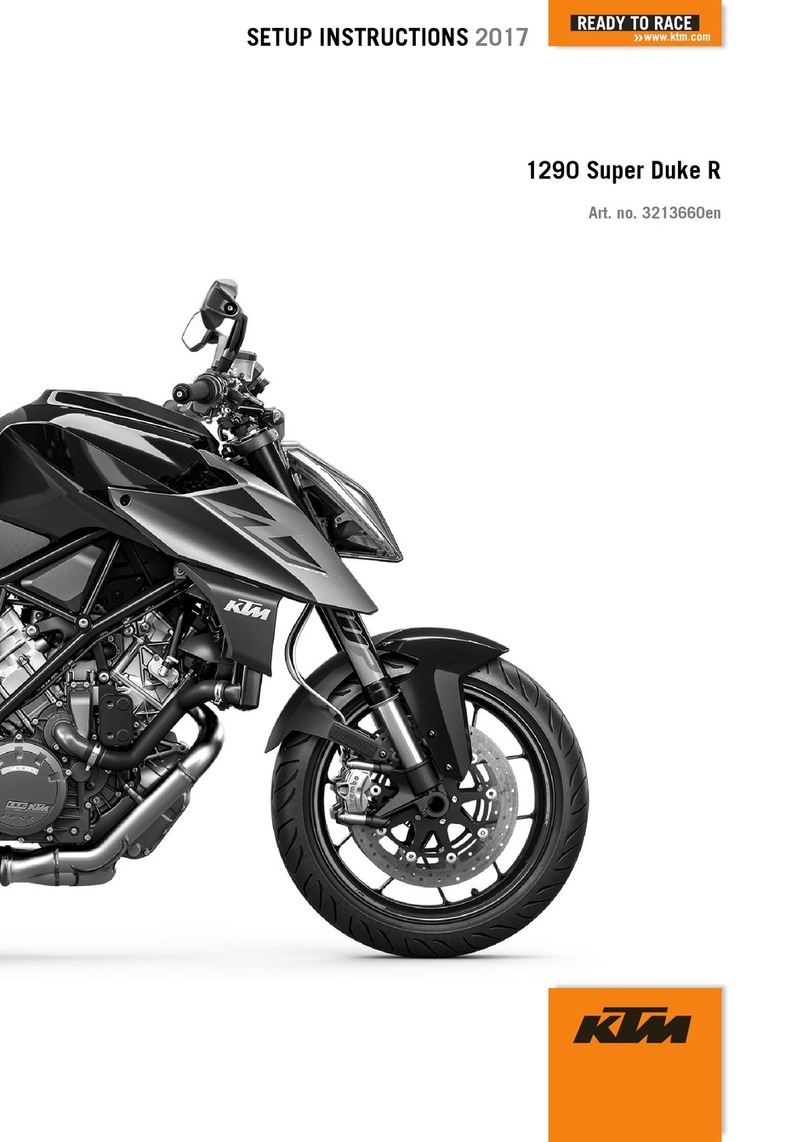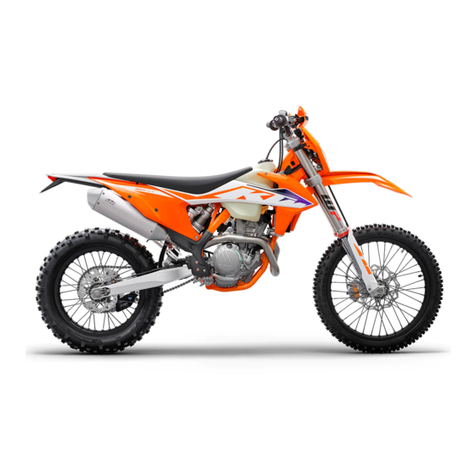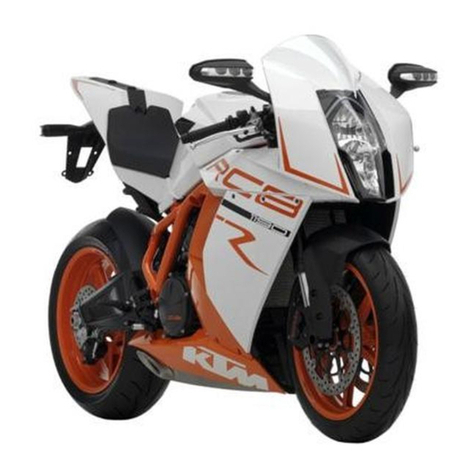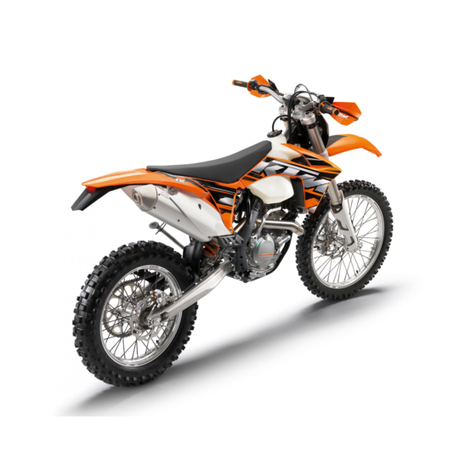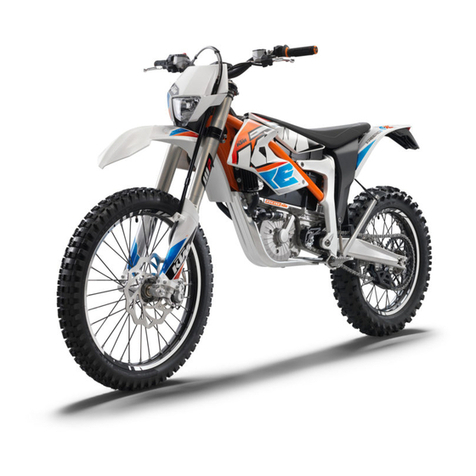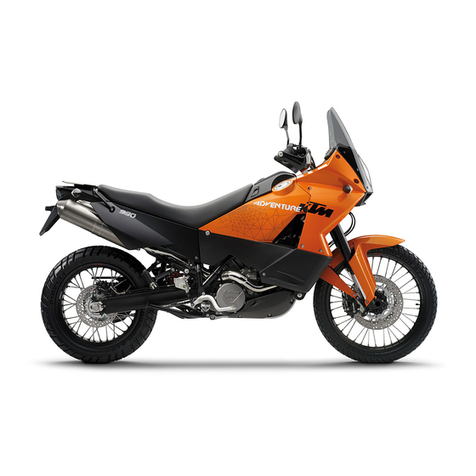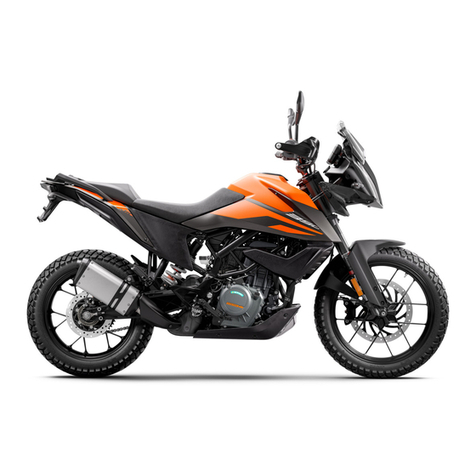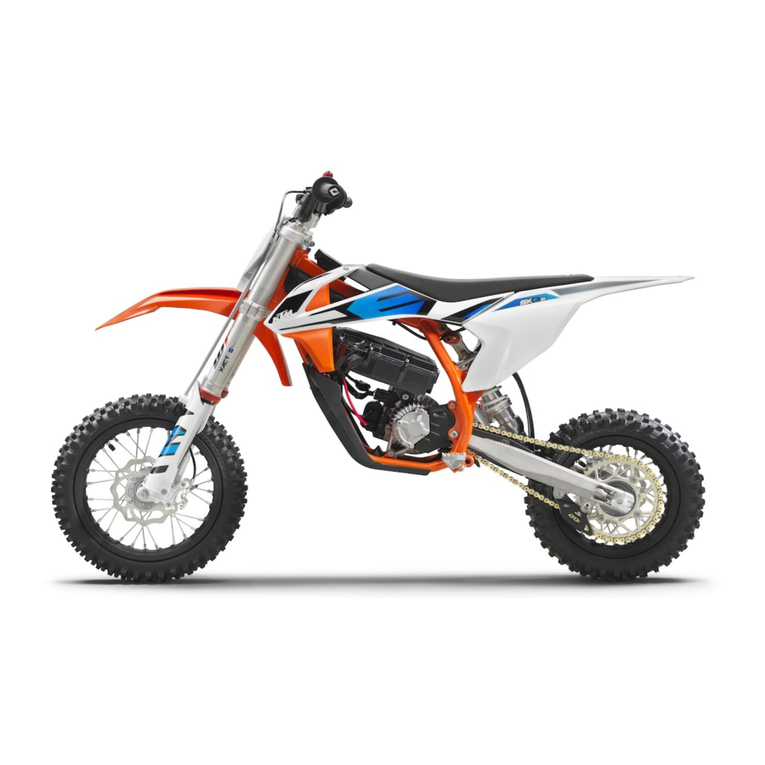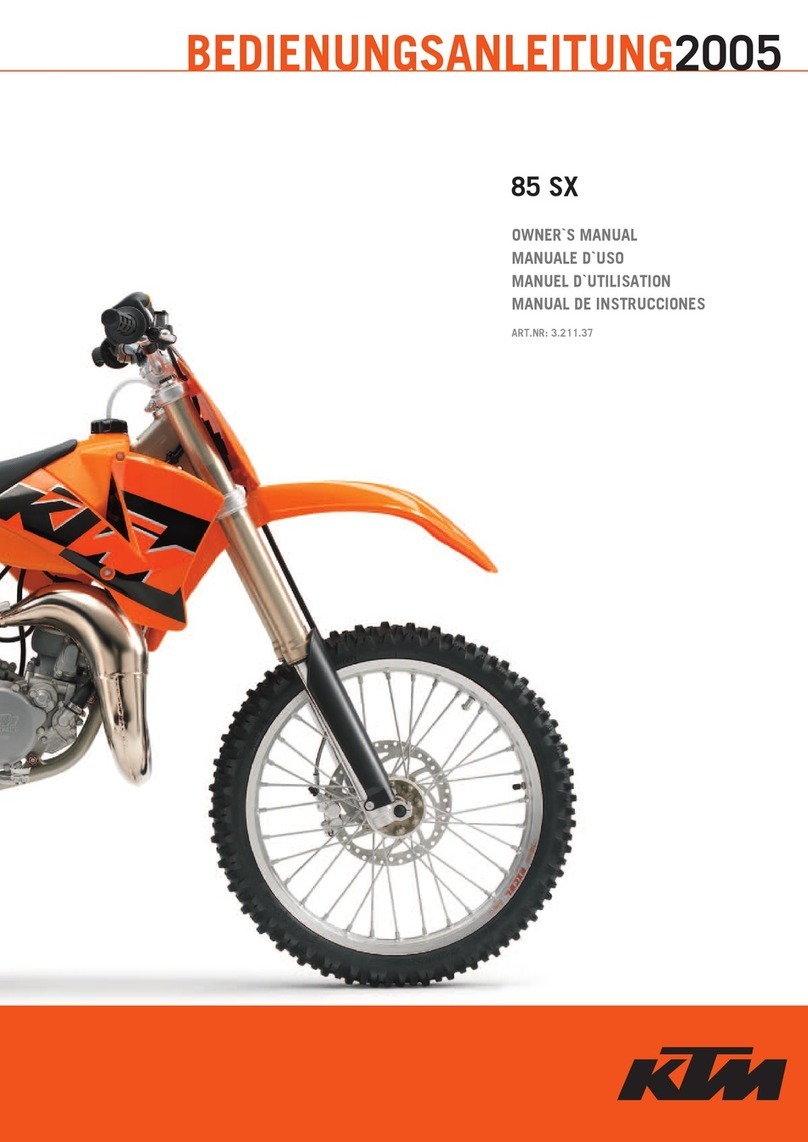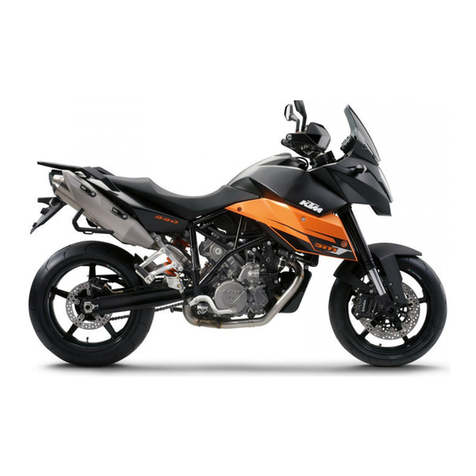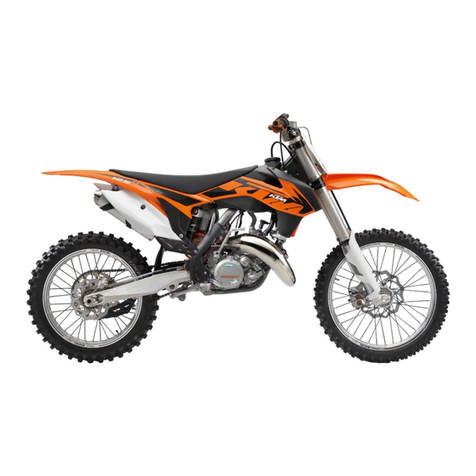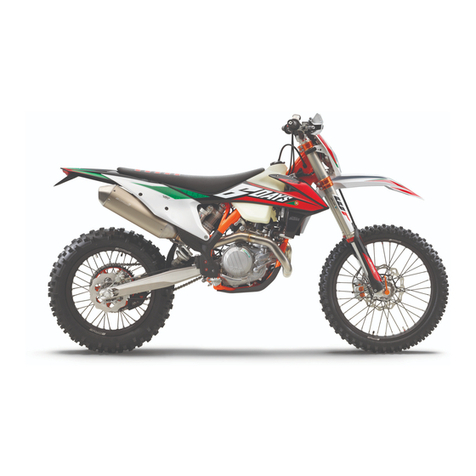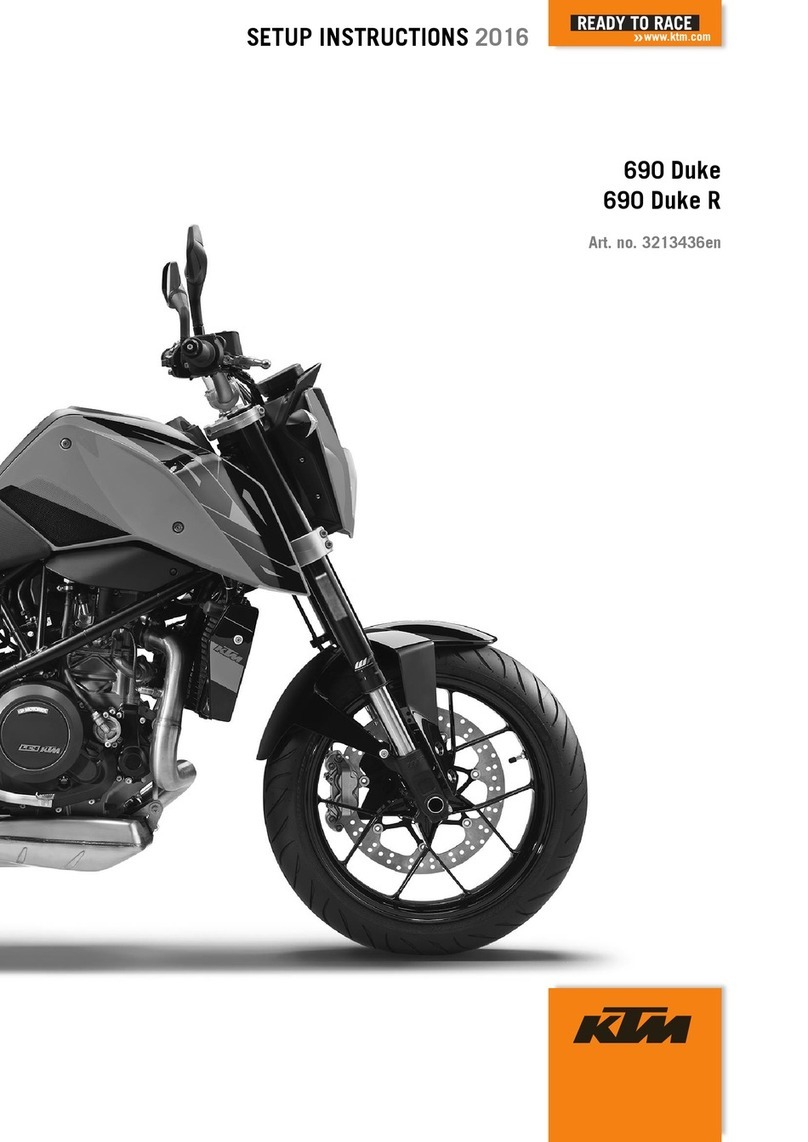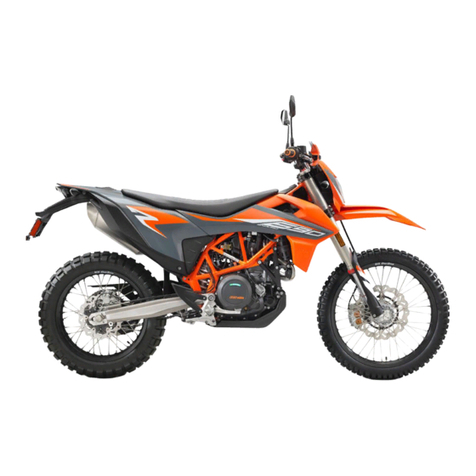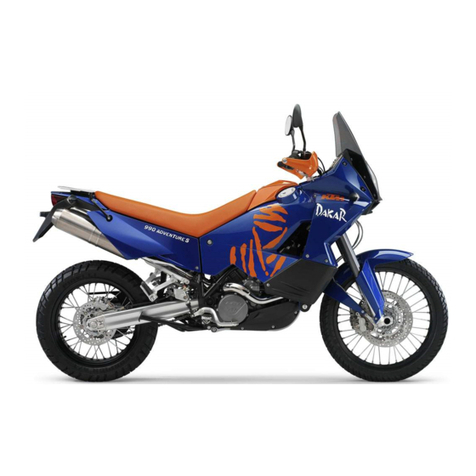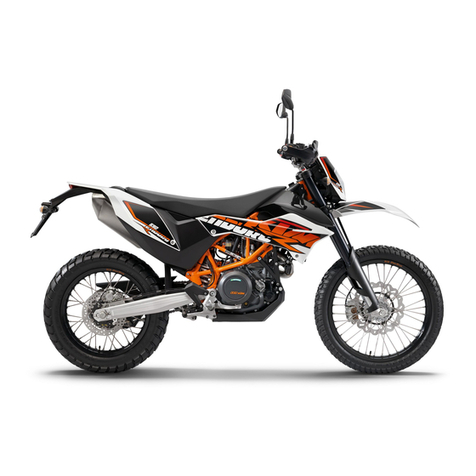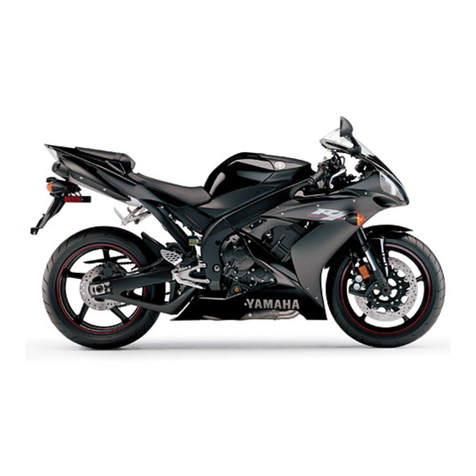
CONTENTS 2
CONTENTS
MEANS OF REPRESENTATION ............................................ 4
IMPORTANT NOTES............................................................ 5
VIEW OF VEHICLE............................................................... 7
View of vehicle, front left side........................................... 7
View of vehicle, rear right side .......................................... 8
LOCATION OF SERIAL NUMBERS ........................................ 9
Chassis number............................................................... 9
Type label....................................................................... 9
Engine number................................................................ 9
Fork part number............................................................. 9
Shock absorber part number............................................. 9
CONTROLS....................................................................... 10
Clutch lever .................................................................. 10
Hot start lever ............................................................... 10
Hand brake lever ........................................................... 10
Short circuit button ....................................................... 10
Electric starter button .................................................... 10
Fuel tap........................................................................ 11
Opening filler cap.......................................................... 11
Closing filler cap ........................................................... 11
Choke........................................................................... 11
Shift lever..................................................................... 12
Foot brake pedal ........................................................... 12
Plug-in stand ................................................................ 12
GENERAL TIPS AND HINTS ON PUTTING INTO
OPERATION...................................................................... 13
Advice on first use......................................................... 13
Running in the engine.................................................... 14
RIDING INSTRUCTIONS .................................................... 15
Checks before putting into operation ............................... 15
Starting ........................................................................ 15
Starting up ................................................................... 16
Shifting, riding.............................................................. 16
Braking ........................................................................ 16
Stopping, parking .......................................................... 16
Refueling...................................................................... 17
SERVICE SCHEDULE......................................................... 18
Important maintenance work to be carried out by an
authorized KTM workshop. ............................................. 18
Important maintenance work to be carried out by an
authorized KTM workshop. (as additional order)................ 19
Important checks and maintenance work to be carried
out by the rider. ............................................................ 19
MAINTENANCE WORK ON CHASSIS AND ENGINE.............. 21
Jacking up the motorcycle.............................................. 21
Removing the motorcycle from the work stand.................. 21
Checking the basic chassis setting with the rider's
weight .......................................................................... 21
Compression damping of shock absorber.......................... 21
Adjusting the high-speed compression damping of the
shock absorber .............................................................. 21
Adjusting the low-speed compression damping of the
shock absorber .............................................................. 22
Adjusting the rebound damping of the shock absorber....... 22
Measuring rear wheel sag unloaded ................................. 23
Checking the static sag of the shock absorber .................. 23
Checking the riding sag of the shock absorber .................. 23
Adjusting the spring preload of the shock absorber x...... 24
Adjusting the riding sag x............................................. 24
Removing the shock absorber x..................................... 25
Installing the shock absorber x..................................... 25
Checking the basic setting of the fork.............................. 25
Adjusting the compression damping of the fork ................ 25
Adjusting the rebound damping of the fork....................... 26
Bleeding fork legs.......................................................... 26
Cleaning dust boots of fork legs ...................................... 27
Removing the fork protector............................................ 27
Installing the fork protector ............................................ 27
Checking play of steering head bearing............................ 27
Adjusting play of steering head bearing x....................... 28
Fork offset .................................................................... 28
Adjusting the fork offset x............................................ 29
Removing the fork legs x.............................................. 29
Installing the fork legs x............................................... 29
Removing the lower triple clamp x................................ 30
Installing the lower triple clamp x................................. 30
Greasing the steering head bearing x............................. 31
Dismounting the front fender.......................................... 31
Installing the front fender............................................... 31
Dismount the start number plate..................................... 32
Installing the start number plate ..................................... 32
Handlebar position ........................................................ 32
Adjusting handlebar position x...................................... 32
Checking gas Bowden cable route ................................... 33
Checking play in the gas Bowden cable ........................... 33
Adjusting the gas Bowden cable play x.......................... 33
Checking for chain dirt accumulation .............................. 34
Cleaning the chain......................................................... 34
Checking the chain tension ............................................ 34
Checking the chain tension when fitting rear wheel........... 35
Checking the rear sprocket / engine sprocket for wear ....... 35
Checking chain wear...................................................... 35
Adjusting the chain tension ............................................ 36
Adjusting chain tension - after checking .......................... 37
Adjusting chain tension - fitting rear wheel ...................... 37
Adjusting chain guide x............................................... 38
Checking the brake discs................................................ 38
Checking the free travel of the hand brake lever ............... 38
Adjusting the basic position of the handbrake lever........... 39
Checking front brake fluid level....................................... 39
Adding front brake fluid x............................................ 39
Checking the front brake linings...................................... 40
Removing front brake linings x..................................... 40
Installing the front brake linings x................................. 41
Changing the front brake linings x................................. 42
Checking free travel of foot brake lever ............................ 42
Adjusting basic position of footbrake lever x................... 43
Checking the rear brake fluid level .................................. 43
Adding brake fluid for the rear brake x.......................... 44
Checking the rear brake linings....................................... 44
Removing rear brake linings x....................................... 45
Installing the rear brake linings x.................................. 45
Changing the rear brake linings x.................................. 46
Removing the front wheel x.......................................... 46
Installing the front wheel x........................................... 47
Removing rear wheel x................................................. 48
Installing the rear wheel x............................................ 48
Checking the tire condition............................................. 49
Checking tire air pressure............................................... 49
Checking spoke tension.................................................. 50
Removing the battery x................................................ 50
Installing the battery x................................................. 50
Recharging the battery x.............................................. 51
